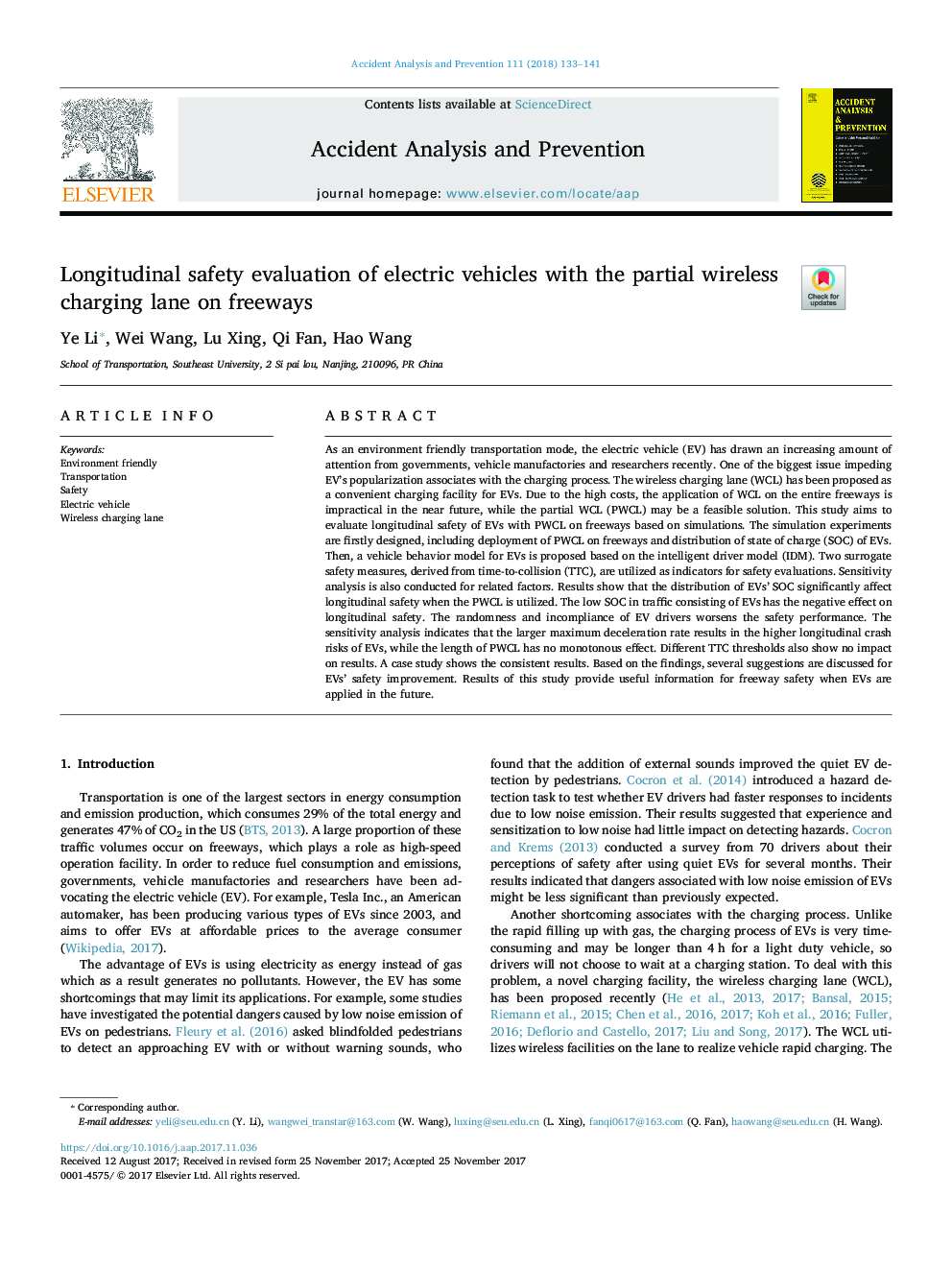| Article ID | Journal | Published Year | Pages | File Type |
|---|---|---|---|---|
| 6965256 | Accident Analysis & Prevention | 2018 | 9 Pages |
Abstract
As an environment friendly transportation mode, the electric vehicle (EV) has drawn an increasing amount of attention from governments, vehicle manufactories and researchers recently. One of the biggest issue impeding EV's popularization associates with the charging process. The wireless charging lane (WCL) has been proposed as a convenient charging facility for EVs. Due to the high costs, the application of WCL on the entire freeways is impractical in the near future, while the partial WCL (PWCL) may be a feasible solution. This study aims to evaluate longitudinal safety of EVs with PWCL on freeways based on simulations. The simulation experiments are firstly designed, including deployment of PWCL on freeways and distribution of state of charge (SOC) of EVs. Then, a vehicle behavior model for EVs is proposed based on the intelligent driver model (IDM). Two surrogate safety measures, derived from time-to-collision (TTC), are utilized as indicators for safety evaluations. Sensitivity analysis is also conducted for related factors. Results show that the distribution of EVs' SOC significantly affect longitudinal safety when the PWCL is utilized. The low SOC in traffic consisting of EVs has the negative effect on longitudinal safety. The randomness and incompliance of EV drivers worsens the safety performance. The sensitivity analysis indicates that the larger maximum deceleration rate results in the higher longitudinal crash risks of EVs, while the length of PWCL has no monotonous effect. Different TTC thresholds also show no impact on results. A case study shows the consistent results. Based on the findings, several suggestions are discussed for EVs' safety improvement. Results of this study provide useful information for freeway safety when EVs are applied in the future.
Related Topics
Physical Sciences and Engineering
Chemical Engineering
Chemical Health and Safety
Authors
Ye Li, Wei Wang, Lu Xing, Qi Fan, Hao Wang,
